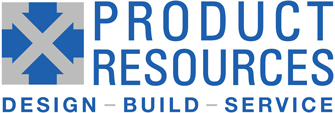Verification and Validation (or V&V) are two separate but related processes that manufacturers use to ensure their product is meeting requirements and specifications and achieving its intended purpose.
V&V can be performed internally or through independent third parties.
- Verification is intended to evaluate whether the product is complying with a regulation or some other requirement.
- Validation is intended to evaluate whether the product is fulfilling the needs of the customer.
Manufacturing Process Design, like Product Design, is a design effort which must be challenged to show that the Process Design will yield good quality product, much like the Product Design can yield a properly functioning Product, if built properly.
Regulatory approval of the product is in many cases predicated on a Product Design that has been built in a Validated Manufacturing Process. See the Regulatory Approval section for information. The Process V&V also includes qualification of Test Fixtures and Jigs to show that they are properly functioning and within calibration limits.
The degree of testing and the level of documentation required to substantiate the testing varies with the product’s market requirements. For many products, a fixture can be built and tested by the engineering department (verified) and can be used in production. For Medical Devices – really any product that is high-risk – there are Validation requirements as well.
Validation requires specific design and approval of a Test Plan and Test Protocols, then the execution of those Test Protocols with the results published in a Test Report. There must be traceability from the Process Requirements through the Process Design to the Test Protocols and Reports. This traceability must show that each of the Requirements has been addressed by the Design, and the Design has been challenged by the Protocol, which has been documented in the Report.
As with any design process, there should be a Risk Analysis and FMEA performed to probe for issues that may not be covered while checking to see the Requirements have been met – just because you meet all Requirements does not mean you have not introduced a problem which affects quality, which may not be tied to a requirement. For example, you cannot have a requirement that states “The manufacturing process shall not introduce any untraceable defects”; how would you test it? Also, requirements should state what shall be met, not what shall not be met.
The basic process we follow for a full Process V&V is:
- Develop Manufacturing Process Requirements, much like the Product Requirements which will describe the necessary criteria the process must meet.
- Develop a Risk Plan to identify areas that may need additional design requirements or testing.
- Develop Design Requirements which flow from the Process Requirements and identify manufacturing steps and control points. There may be multiple Design Requirements documents, one for each operation and especially for Test Fixtures and Jigs. Complete a Traceability Matrix showing that the Design Requirements cover all the Process Requirements.
- Design the Manufacturing Process and the associated Test Fixtures and Jigs.
- Write Test Protocols to challenge the Design appropriately. Again, use the Traceability Matrix to show the Test Protocols have addressed each of the Design Requirements (verification) and each of the Process Requirements (Validation).
- Execute the Test Protocols and record the results in the Test Reports. Address any issues or anomalies that were found.
Not all these steps are required for every product. Again, the decision to include them is based on the risk of a defective process harming the product quality, end user, or if a Medical Device, the patient outcome.
To perform the V&V activities, a Pilot Production run of units must be built to allow for testing of the process. Some of these units may undergo stress testing or destructive testing that may damage them in subtle ways, so should be considered scrap once the testing is completed.
Other test units may be able to be offered for sale once regulatory testing is complete, but it is risky to count on having salable units at the end of the V&V.
